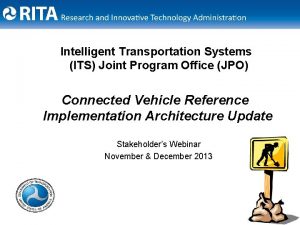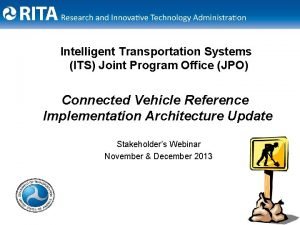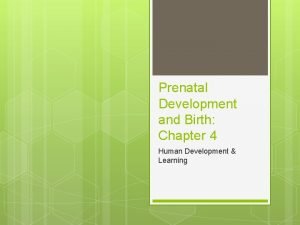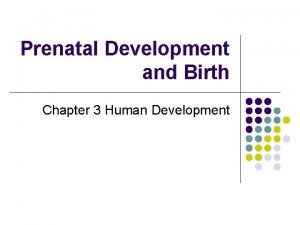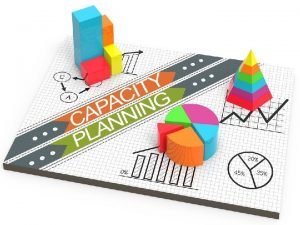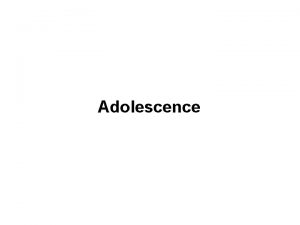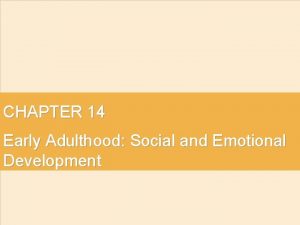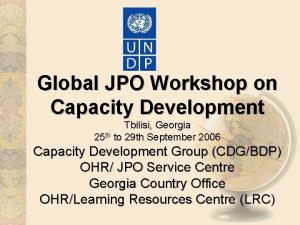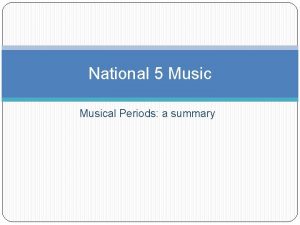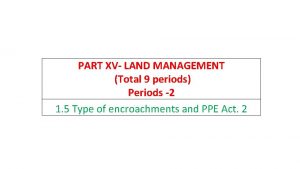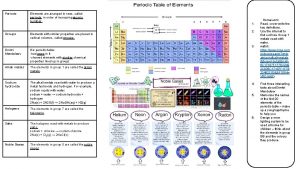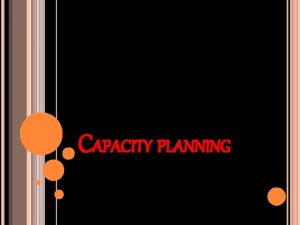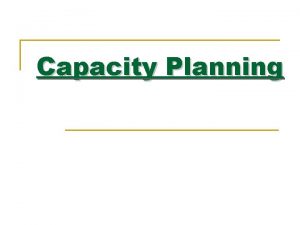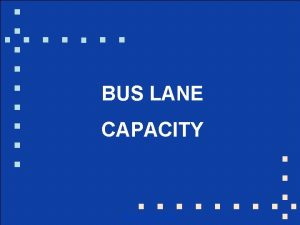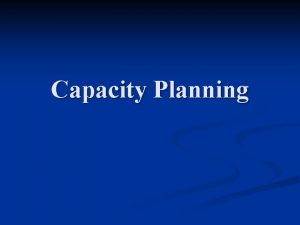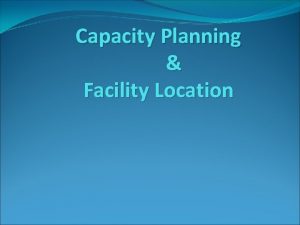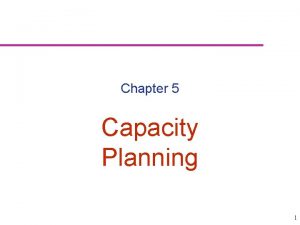Capacity Development during Periods of CrisisTransition JPO Course


































- Slides: 34

Capacity Development during Periods of Crisis/Transition JPO Course on UNDP Programming Bob Bernardo UNDP Regional Centre in Bangkok November 2007 19 Jan 2006

Portrait Gallery • Create a portrait of yourself inside the frame • Write your name/nickname under your photo • Indicate your ‘age’ (years with UN) • Country of assignment 2

Global Agreements & Corporate Guidelines es t u t i t s relevant to velopment conhe efforts de gt n y i t t i s c i a s as eed cap Capacity Development r n i g o t a P t y r D l N t al po n p U ha o u t f i s t o s t a e a n n n r h o i es t inte buti derl z i i n e r t n u v n g e nd i d o o a h n c c l c a e g a a s R n n i o 9. DG utio es t t i arch M i r r t t e s e n v n h u i t o nal s g co o e i n t i d e the a d u l m n u c l heir g in gram goals, inc t n o i r h t d p i l i f o nt ce w y bu e t n i a m c d a p r p o o devel hasis of ca ing in acc p ild m u e b e y t h t apaci ies c n a eg t hum a r t s and plans

Why the renewed Focus on CD? Trainings, exposure trips, workshops = Capacity Development 4

Capacity development is too abstract => What does it really mean? 5

Relatively short life spans of projects and programmes 6

Too much focus on short -term results versus outcomes 7

With trainings, workshops and exposure trips, are we really reaching our CD goals? 8

Why have past approaches not shown expected results? 9

Capacity Characteristics in Transition/Crisis Countries • Weak state structures and lack of accountability • Excessive centralization (e. g. , one party rule) and limited authority for local governments • Politicized and parallel bureaucracies (infighting and lack of shared vision for long-term directions) …. crises can present opportunities for important reforms… • Civil service of limited functionality (inadequate incentive systems); low quality public service unresponsiveness to people’s needs • Need to address both institutional dimensions (unclear/overlapping mandates, bureaucratic processes, poor oversight mechanisms, weak client orientation, etc. ) AND human dimensions (poorly qualified, badly paid, wrong number, inefficiently allocated civil servants) 10

The UNDP Approach to Capacity Development • Provides an endogenous process that fosters ownership • Brings rigor and a systematic method for assessing existing capacity assets and needs; avoids ad hoc identification of capacity needs • Provides a comprehensive view of the issues that could be addressed in a capacity assessment • Provides a method for generating quantitative as well as qualitative data to support the identification of priority capacity needs and the development of a capacity development response strategies • Makes sense of complex development situations, when it is not always obvious where best to intervene to promote capacity development 11

UNDP Definitions Related to Capacity: the ability of individuals, institutions, and societies to perform functions, solve problems, and set and achieve objectives in a sustainable manner. Capacity Development: the process through which the abilities to do so are obtained, strengthened, adapted and maintained over time. Capacity Assessment: An analysis of current capacities against desired future capacities; this assessment generates an understanding of capacity assets and needs which in turn leads to the formulation of capacity development strategies. 12

A Systems Approach: The Three Layers of Capacity Development Individual level (experience, knowledge & technical skills) Deepening effective and accountable state-citizen engagement Organisational level (systems, procedures & rules) Enabling environment (institutional framework, power structure & influence) Successful capacity development requires not only skills & organizational procedures, but also incentives & good governance 13

Capacities for Whom? • Public Sector (ministries, departments, agencies, local governments, etc. ) • Civil Society Organizations • Other implementing partners 14

Capacities for What? • Technical Capacities – associated with particular areas of professional expertise or knowledge (e. g. , agricultural extension, health, education) 15

• Functional Capacities – activities associated with the formulation, implementation and evaluation of policy, programmes and projects; relevant in all situations irrespective of sector/organization Ø Engage in Multi-Stakeholder Dialogue Ø Assess a Situation and Create a Vision Ø Formulate Policy and Strategy Ø Budget, Manage and Implement Ø Monitor and Evaluate 16

Core Development Issues • Institutional Development – ensuring effectively functioning national/local institutions for societal, economic, and human development (e. g. , mission and strategy, business processes, human resources, physical resources) • Leadership – fostering good leadership maximizes capacity investments • Knowledge – CD is underpinned by knowledge or what people know • Mutual Accountability – efficient, responsive, transparent and accountable public administration key to sustainable development 17

The Capacity Development Framework Technical Capacities + Functional Capacities (within a Sector/Theme Context) ts of tr En ing t abl En ironm v ’l En Org in Po y al u ivid Ind Engage in Analyze a Formulate Multi. Situation & Policy & Stakeholder Create a Strategy Dialogue Vision Budget, Manage & Implement Monitor & Evaluate Leadership Mutual Accountability Knowledge Human Resources Financial Resources Core Issues Institutional Development Physical Resources Environmental Resources Human Rights Based Approach Overlays Any Capacity Assessment Primary Areas of Capacity Assessment Focus – Specific Assessment Questions and Indicators Available for Each Cross Section * Technical capacities complement the functional capacities. 18

Capacity Development Process Step 1: Situation Analysis/SH Consensus on Project Need Step 4: Monitor & Evaluate Project Step 4: Monitor & Evaluate CD Strategies Step 3: Implement CD Plan Step 1: Assess CD Needs CD Process Step 2: Formulate CD Strategies Project Management Cycle Step 3: Implement Project Step 2: Formulate Project Design, Strategy and Workplan 19

Capacity Assessment: An analysis of current capacities against desired future capacities; this assessment generates an understanding of capacity assets and needs which in turn leads to the formulation of capacity development strategies 20

Step 1. Conducting a Capacity Assessment The Capacity Assessment Team Your CA Dream Team – experts on: • national/local context; • specific content or sector under assessment; and • capacity assessment methodology. An assessment “owner” (Government/Primary Client) to drive the CA process A Facilitator (UNDP CO) to manage the overall process and liaise between CA team and client A Team Leader (UNDP/Consultant) to manage and guide the technical CA processes 21

Step 1. Conducting a Capacity Assessment Why do we want a CA? objectives, expectations, roles, use of results What organization or which level is the most appropriate entry point for a CA? Who should we involve (internals/ externals)? Whose capacity and for what? scale/scope What CA process is most appropriate? (self-assessment vs FGDs and KIIs) © Scott Maxwell, Big Stock Photo. 22

Capacity Self-Assessments …… the capacity assessment worksheets • CA worksheets serve as the main tool for the self-assessment • defines the core issue, functional capacity, and capacity indicators and rates the capacity levels • the capacity statements or indicators further adapts the tool to local needs and development contexts (poverty? Governance? CPR? ) • CA team prepares the worksheets and indicators in close consultation with the client • Language translation issues 23

Capacity Self-Assessments Capacity ratings: 1 2 3 4 5 Very low (No evidence of relevant capacity) Low (Anecdotal evidence of capacity) Medium (Partially developed capacity; e. g. , policies/documents exist; partial implementation) High (Widespread, but no comprehensive evidence of capacity, e. g. , full implementation of policies/documents) Very high (Fully developed capacity, e. g. , full implementation, active M&E feeds inputs back into system) You may want to define your own, commonly understood capacity levels 24

Sample Assessment Worksheet Development Issue: Human Resources Human resource capacities are at the heart of enhancing human development. Understanding and enhancing human resource capacities of CDS is crucial to ensure efficient, effective and accountable programme budgeting, management and implementation. Please indicate a capacity rating for each guide statement: Rating 1. CDS has sufficient human resource capacity, e. g. , skills and competencies to fulfill its mandate 2. CDS has the capacity to develop clear policies containing objective criteria with regard to recruitment, promotion, and assignment of staff functions 3. CDS has the capacity to maintain a roster and referral system of experts/ coaches to deploy as necessary to respond to the needs of the Afghan civil service in general, and the CAP/AEP/LEP in particular 4. CDS has the capacity to design and implement a performance management system for its coaches/experts/consultants including performance targets, review cycles and incentives 5. CDS has the capacity to design and implement a performance management system for its staff including performance targets, review cycles and incentives Potential Indicators: Alignment of human resources’ skills and competencies with CDS mandate and priorities Existence and enforcement of human resource performance management policies and mechanisms Orientation of staff functions toward producing results to fulfill CDS mandate Alignment of training with CDS staff functions Evidence Score/Rating: 1 Very Low 2 Low 3 Medium 4 High 5 Very High 2 3 1 2 2 Strengths • well motivated staff • competent of CDS staff • HR systems in place Areas for Improvement • More effective performance evaluation system • Designing effective CD plans • quality coaches deployed; roster and referral systems exist No evidence or only anecdotal evidence of a strategy/approach. A strategy/approach exists. The strategy is planned and implemented. A strategy/approach is planned, implemented and reviewed on the basis of benchmarking data and adjusted accordingly. An approach is planned, implemented, reviewed on the basis of benchmarking data, adjusted and fully integrated into the organisation. Write Rating/Score that Best Reflects Current Capacity for Managing Human Resources 2. 0 Write Rating/Score that Best Reflects Expected Capacity (in 2010) for Managing Human Resources 2. 5 25

26

27

Step 2: Formulate Capacity Development Strategies 2. 1 Institutional Change and Incentives • Functional Reviews • Incentives/Salary reform, • Business processes, including project management and procurement capacities, etc. • Process facilitation for change management 28

Step 2: Formulate Capacity Development Strategies 2. 2 Leadership development Negotiation, Visioning skills, Coaching and mentoring, Ethics, Advocacy, etc. 29

Step 2: Formulate Capacity Development Strategies 2. 3 Education and Learning Training methods, Tertiary education curricula Investments, Vocational education, On-the-job skills, etc. 30

Step 2: Formulate Capacity Development Strategies 2. 4 Accountability and Voice Mechanisms Peer reviews, Citizen watch, Monitoring and evaluation, Stakeholder feedback and forums Public information campaigns Group engagement techniques 31

Step 3/4: Cost and Monitor Capacity Development Strategies • Critical that capacity development strategy options and related action plans are accurately costed to determine required funding • Input-based budgeting process for shorter-term capacity development actions and strategies • Input-based budgeting is based on known, quantifiable inputs. • Less straight-forward projecting costs required for longer-term capacity development. • Track and monitor progress based on established CD baselines 32

Policy and Programme Implications • • Stronger advocacy role Mentoring/coaching role Allocate time…. Allocate resources…. Revisit regularly……. set intervals Plan over multiple project cycles Be aware that these remain micro-reforms NEX, Sector support, Budget support national implementation capacities 33

www. capacity. undp. org 34
 Its jpo
Its jpo Its jpo
Its jpo Are sore breasts and cramps a sign of pregnancy
Are sore breasts and cramps a sign of pregnancy Periods of prenatal development
Periods of prenatal development Fetal phase
Fetal phase Channel capacity planning
Channel capacity planning Course capacity
Course capacity Cut brick lengthwise
Cut brick lengthwise Course number and title
Course number and title Course interne moyenne externe
Course interne moyenne externe Physical development during early adulthood
Physical development during early adulthood Physical development in adolescence
Physical development in adolescence Emotional development during early adulthood
Emotional development during early adulthood Leader safety course module 2 answers
Leader safety course module 2 answers Most common pay periods
Most common pay periods Modern periodic table
Modern periodic table Topic 15 periods authors and genres
Topic 15 periods authors and genres Periods in roman history
Periods in roman history Periods of music
Periods of music Pay periods and hourly rates
Pay periods and hourly rates Periods of american literature
Periods of american literature What are the approximate dates of the baroque period
What are the approximate dates of the baroque period Groups and periods
Groups and periods The periodic table
The periodic table Periods of reactivity newborn
Periods of reactivity newborn British literature periods
British literature periods Literary periods and their characteristics
Literary periods and their characteristics Medieval literature timeline
Medieval literature timeline Classical music era timeline
Classical music era timeline Periods of infectious disease
Periods of infectious disease Groups vs periods
Groups vs periods Dubowitz score
Dubowitz score Place value periods
Place value periods Premechanical
Premechanical Native american literature definition
Native american literature definition
